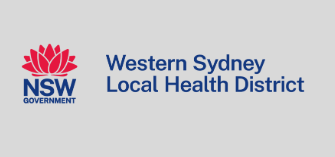Background: Few studies have reported energy balance-related behavior (EBRB) change for peer leaders delivering health promotion programs to younger students in secondary schools. Our study assessed the impact of the Students As LifeStyle Activists (SALSA) program on SALSA peer leaders’ EBRBs, and their intentions regarding these behaviors.
Archives: Resources
Holds our products and product specific data
Background: School-level socioeconomic status (SES) influences on adolescents’ lifestyle behaviors is understudied. We examined how school-level SES and sex influence adolescents’ health-related lifestyle behaviors and intentions.
Conclusions: Students from low ICSEA schools would benefit from additional support to improve dietary-related behaviors and intentions. More research is required to identify what targeted approaches will address sex differences in adolescents’ lifestyle behaviors.
Objectives: This study aimed to identify barriers, facilitators and potential intervention strategies for adolescents to use within the home to promote healthy eating and active living.
Conclusion: The strategies suggested by peer leaders in this study add to the limited literature of potential low-intensity interventions which young people can use to enable healthy lifestyle change in their home environment.
Background and aims: There is an urgent need to address the role of healthy diet and behaviors promoting health among school adolescents in order to tailor appropriate interventions in Jordanian schools. This study aims to evaluate the reliability and validity of the Arabic version of Students As LifeStyle Activists (SALSA) survey alongside Jordanian adolescents’ attitudes and perceived barriers to healthy eating and physical activity.
Conclusion: Interventions should be tailored to health attitudes and beliefs of Jordanian school students in parallel with improving physical resources and enhancing peer and/or friend support.
Objective: To determine the impact of a peer-led, school-based programme (Students As LifeStyle Activists; SALSA) on energy balance–related behaviours (EBRBs) in Grade 8 students, and the cost of implementing the programme.
Conclusion: The SALSA peer education programme had a positive impact on most of the dietary EBRBs examined. The cost evaluation showed that it is a relatively low-cost programme to implement.
Download historical SALSA newsletters from 2019, Terms 1 & 2!
See our new YouTube channel for access to all video content produced for:
- SALSA Program
- Triple A Program
- PERU Video content
We’re adding to our video resources regularly, so hit SUBSCRIBE in YouTube to stay updated!
This PDF presents the results of our study assessing SALSA Peer Leaders’ baseline indicators of eating habits, physical activity and recreational screen-time. Read the study here.
Breath of life – a video resource for Triple A; Adolescent Asthma Action!
Breathe easy – a video resource for Triple A; Adolescent Asthma Action!
![[ARTICLE] Evaluation of a peer education program on student leaders’ energy balance-related behaviours](https://peru-programs.sydney.edu.au/wp-content/uploads/2020/08/IMG_6539-min.jpg)
![[ARTICLE] School-level socioeconomic status influences adolescents’ health-related lifestyle behaviours and intentions](https://peru-programs.sydney.edu.au/wp-content/uploads/2020/07/benefit_schools.png)
![[ARTICLE] Adolescent-led strategies within the home to promote healthy eating and physical activity](https://peru-programs.sydney.edu.au/wp-content/uploads/2020/07/3a-benefit_schools.jpg)
![[ARTICLE] Attitudes and perceived barriers toward healthy lifestyle behaviours in Jordanian adolescents: a developing country perspective](https://peru-programs.sydney.edu.au/wp-content/uploads/2020/08/SALSA-4-1.jpg)
![[ARTICLE] Impact and cost of the peer-led Students As LifeStyle Activists programme in high schools](https://peru-programs.sydney.edu.au/wp-content/uploads/2020/08/SALSA-Peer-Leaders-certifiates-1.jpg)
![[PDF] SALSA newsletters](https://peru-programs.sydney.edu.au/wp-content/uploads/2020/08/SALSA-PLW-8-1.jpg)

![[PDF] Year 10 Students’ Lifestyle Behaviours](https://peru-programs.sydney.edu.au/wp-content/uploads/2020/03/ErskineParkHS.jpg)
![[VIDEO] Breath of life – Triple A](https://peru-programs.sydney.edu.au/wp-content/uploads/2020/07/the-triple-a-program.png)
![[VIDEO] Breathe easy – Triple A](https://peru-programs.sydney.edu.au/wp-content/uploads/2020/07/3a-benefit_students.jpg)

